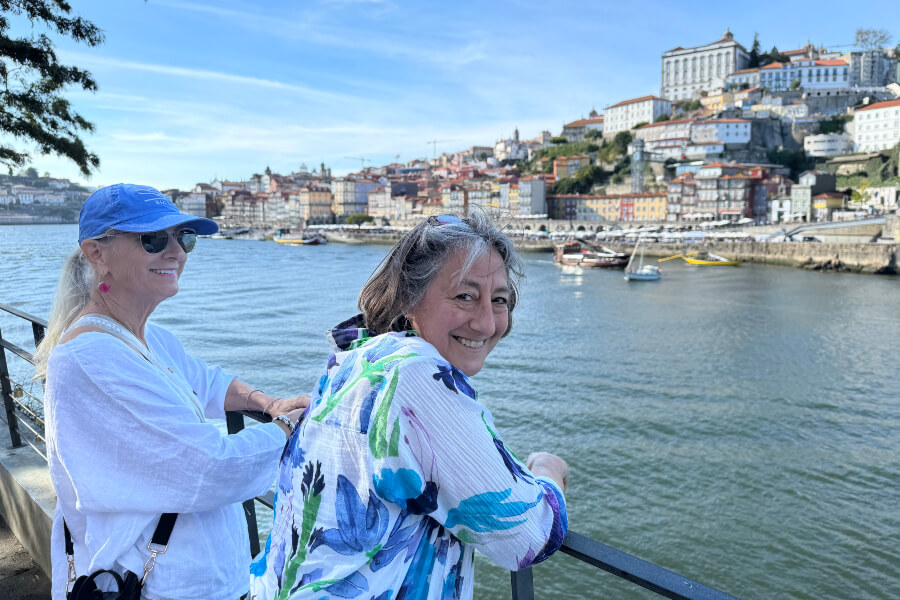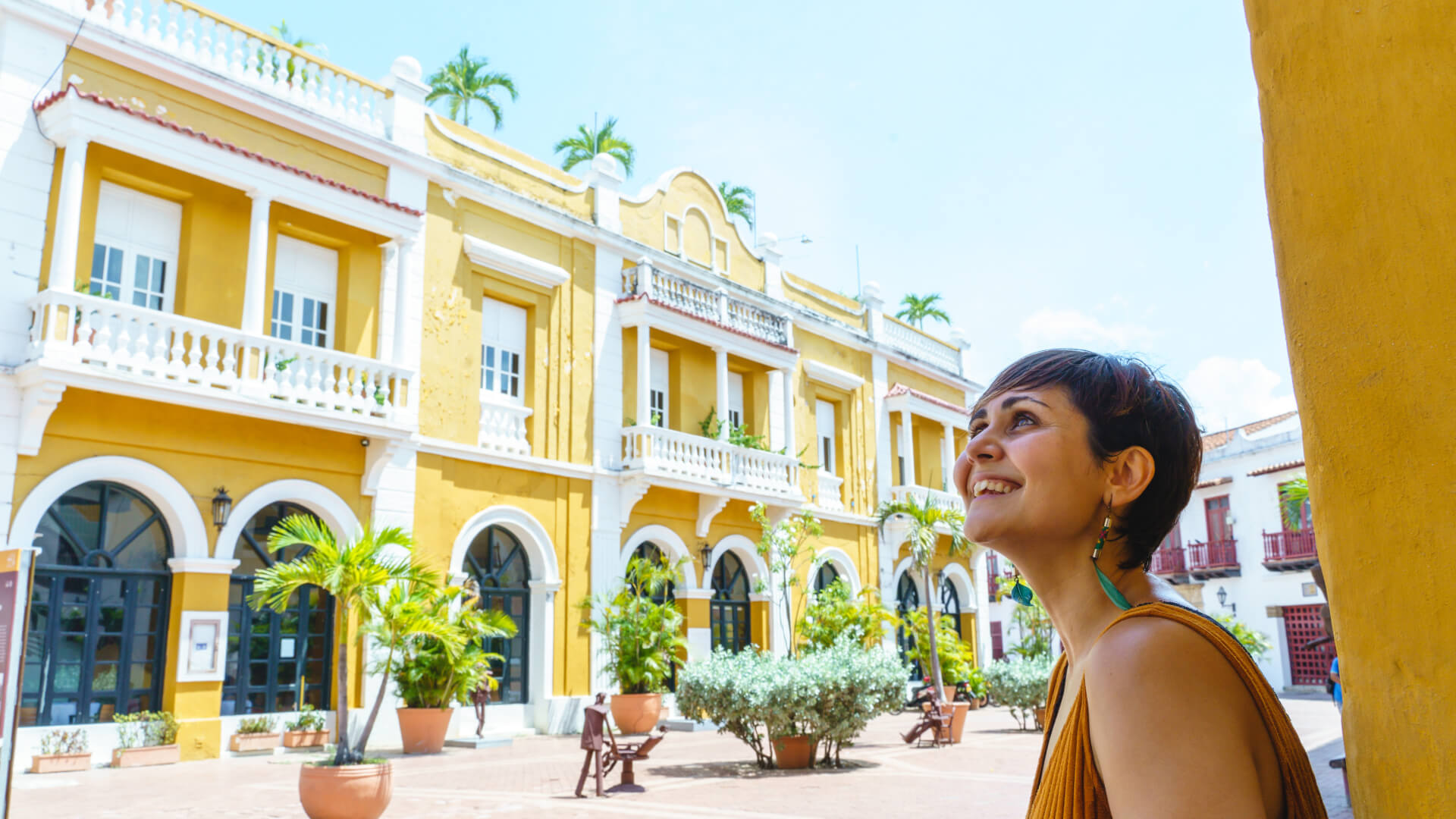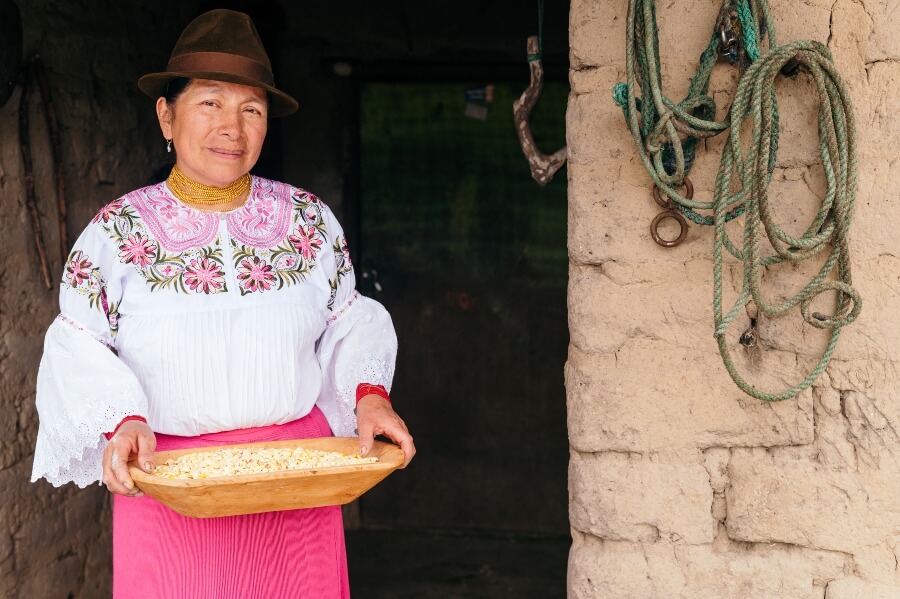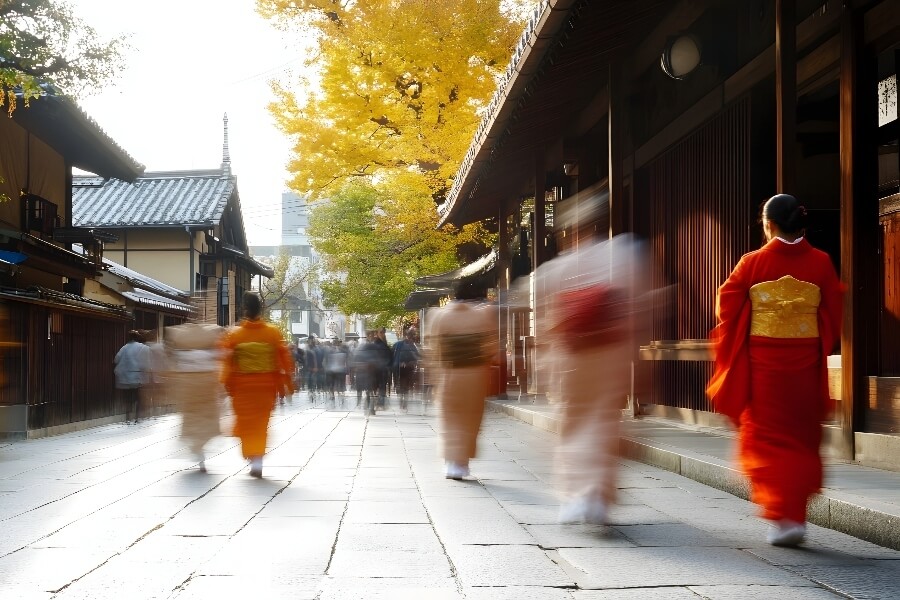No matter where you go in Portugal, there’s wonder at every turn. Wend your way through narrow streets in Lisbon and admire the signature blue and white tiles everywhere. Take part in a grape harvest in the Duoro Valley and learn the lore of the vineyards. Visit Sintra’s Technicolor castle above the sea, or discover a mini Stonehenge tucked in a forest of cork trees. Exploring Portugal is an endless buffet for your senses and your curiosity.
This small but diverse nation on the Iberian Peninsula has a way of enchanting visitors with its rich history, stunning landscapes, and vibrant culture. “Many Americans think of France or Italy when they plan European travel,” says NextTribe’s founder and CEO Jeannie Ralston, “but Portugal is a total revelation. It’s become ‘my happy place’ for so many of the women who travel there with us.”
Join NextTribe on small group tours for women age 45+. Our trips are fun, immersive, and transformational. Check out how we travel to Portugal!
From its sun-dappled Atlantic beaches to its medieval villages, Portugal offers something for every traveler. This guide takes you on an in-depth journey through the best experiences Portugal has to offer.
Portugal’s History: A Long and Winding Road

Tucked next to Spain on the Iberian peninsula, Portugal has a long and storied history stretching back to prehistoric times and investing the country with its distinctive charm. Landmarks like the Almendres Cromlech, a mysterious megalithic site in Alentejo that’s akin to a petite Stonehenge, date to this era. These ancient stone circles predate Stonehenge in fact, offering a glimpse into the region’s early human settlement. There’s a singular gigantic stone nearby, a menhir, believed to be a fertility symbol from the same era.
Later, the Romans brought urban sophistication, agriculture, and infrastructure. Roman ruins like Conímbriga, near Coimbra, showcase impressive mosaics, baths, and aqueducts that reflect their influence.
There’s a strong Moorish legacy, too. The Moors ruled much of Portugal from the 8th to the 12th centuries, leaving an enduring mark on architecture and culture. In Silves, visitors can explore the Silves Castle, a well-preserved fortress showcasing Islamic design. The use of intricate geometric tiles, or azulejos, remains a hallmark of Moorish influence in Portugal today.
Moving along the timeline, the 15th and 16th centuries ushered in Portugal’s Golden Age as explorers like Vasco da Gama and Ferdinand Magellan expanded the known world. Lisbon’s Belém Tower and Jerónimos Monastery are enduring symbols of this maritime heritage, both UNESCO World Heritage Sites that celebrate Portugal’s pivotal role in global exploration and trade.
Getting closer to the present day, Portugal’s 20th-century history is shaped by the Carnation Revolution of 1974, a peaceful transition to democracy. Visitors can learn about this transformative period at Lisbon’s Museu do Aljube, which chronicles Portugal’s struggles against dictatorship.
Exploring Portugal: An Array of Diverse Landscapes
It’s not just Portugal’s history that’s deeply varied. So too is its geography. From sun-soaked beaches to dramatic mountain ranges, Portugal’s terrain is a playground for nature lovers and adventurers.
Cliffs, hills, rivers, valleys, and golden beaches hugging the Atlantic: They’re all part of the varied and very beautiful Portuguese terrain.
Portugal’s Atlantic coastline stretches for over 500 miles, offering golden beaches, dramatic cliffs, and world-class surf spots. For instance:
- The Algarve: Known for pristine beaches like Praia da Falésia and natural wonders like the Benagil Caves.
- Costa Vicentina: A less crowded area, ideal for hiking along the Rota Vicentina coastal trail.
- Nazaré: Famous for its towering waves, drawing surfers and spectators alike.
Central and northern Portugal showcase rolling hills, rivers, and traditional villages. Among the highlights:
- The Douro Valley: A UNESCO World Heritage Site, famous for its terraced vineyards and Port wine production.
- Serra da Estrela: Portugal’s highest mountain range; heaven for hiking and winter skiing.
Portugal’s islands, the Azores and Madeira, provide unique escapes.
- The Azores: Known for volcanic landscapes, lush greenery, and whale-watching opportunities.
- Madeira: Offers stunning botanical gardens, levada walks (systems of channels or aqueducts going next to and through mountains), and the thrilling Cabo Girão Skywalk.
When to Visit Portugal
Portugal’s climate is diverse, making it a great destination year-round. Depending on your personal thermostat and the kind of activities you’d like to do, almost any time of year can be the right time to visit.
Portugal’s mild climate typically spans from 50 to 85 degrees during the year, meaning no season is off-limits.
- Spring (March to May): Blooming flowers, mild temperatures (55°F–70°F), and fewer crowds make this a perfect time for sightseeing and hiking.
- Summer (June to August): Warm weather (70°F–85°F) draws beachgoers to the Algarve and surfers to the western coast. Expect bustling cities and festivals like Lisbon’s Santo António celebrations.
- Fall (September to November): Mild days (60°F–75°F) and harvest season in the Douro Valley make this a prime time for wine tours. (This is when NextTribe typically travels to Portugal.)
- Winter (December to February): Cooler but pleasant (50°F–60°F), ideal for exploring cities and enjoying hearty Portuguese cuisine. Snow lovers can even visit the Serra da Estrela for skiing.
How to Get to Portugal
Portugal is easily accessible, with several airlines offering direct flights from the US, meaning many travelers can avoid a long, full day of airport transfers and layovers:
- TAP Air Portugal: Direct flights from major hubs like New York, Miami, Boston, and San Francisco.
- United Airlines: Direct routes to Lisbon from Newark.
- Delta Airlines: Seasonal flights from New York (JFK).
- American Airlines: Flights to Lisbon from Philadelphia.
Once in Portugal, efficient train networks, domestic flights, and affordable buses make it easy to explore the country. Of course, if public transportation isn’t your preferred mode of transportation, you can also reserve a rental car, which can be the best way to take little detours into any towns and villages that beckon.
Lisbon: A City of Light and Charm

Lisbon, Portugal’s vibrant capital, is a city where history and modernity intertwine. With waterfront, hills, and lively nature, it’s a joy to explore and stumble upon stores selling artisanal wares, laid-back cafes, and flea markets. Here, a few notable neighborhoods:
The Alfama District
Lisbon’s oldest neighborhood, Alfama, is a maze of narrow streets, colorful houses, and hidden squares. Whether you do a self-guided or professionally led walking tour, you can hit such highlights as:
- Castle of São Jorge: A medieval fortress with sweeping views of the city. This is a fascinating way to feel as if you’ve been thrown back into the 10th or 11th century, when the structure was built. It’s way high up in Lisbon and you can reach it by public transportation or taxi (those with sturdy knees who like a good workout can climb the steep streets and get there by foot.) Give yourself enough time to appreciate this dramatic location and take photos.
- Lisbon Cathedral: A Romanesque masterpiece that reflects the city’s storied past.
- Fado Houses: Experience the soul of Portuguese music at intimate venues like Clube de Fado, restaurant with Fado music? What is Fado? It’s music that’s mournful and nostalgic and originally reflected the struggles of those who lived in the city’s poorer neighborhoods. It’s now considered the signature music of Lisbon.
Chiado and Bairro Alto

Chiado is Lisbon’s cultural hub, filled with theaters, historic cafes like A Brasileira and Benard bakery (at its current location since 1902), and boutiques. You might want to take a look at São Roque Church, which survived Lisbon’s major earthquake in 1755, visit Bertrand bookstore (the chain’s earliest surviving store is in this neighborhood), and window-shop (or shop-shop) at designer-clothing outposts.
In contrast, Bairro Alto comes alive at night, with lively bars, rooftop terraces, and vibrant street art. (Many people love the food hall known as Time Out Market Lisboa in this neighborhood.) But that doesn’t mean you shouldn’t visit it during the day. In Bairro Alto, Principe Real is a great stop; it’s an affluent residential neighborhood, and can be reached by a steep hike uphill for those who want to get some major stairclimbing in, or you can take the vintage funicular. At the top, definitely make your next stop the lush Parque Principe Real. There, you’ll see a wondrous old cedar tree, its huge branches held in place by trellises, as if it’s a gigantic umbrella. Sit on a bench or find a nearby beer garden and enjoy the perfect place to do some people-watching.
Parque Principe Real is a fun spot to people-watch. Grab a bench near its wondrous old cedar tree and take in the view.
Baixa
Baixa is an old central district. It can be quite tourist-filled and for good reason: You’ll find grand historic buildings and squares. At the bank of the river, there’s the Cais das Colunas, twin columns and marble steps that served as the official welcome mat to Lisbon back in the day. You might catch people playing music and dancing there in the afternoons and evenings.
Belém
This riverside district is home to iconic landmarks like:
- Belém Tower: A fortress-turned-lighthouse and symbol of Portugal’s maritime past.
- Jerónimos Monastery: A masterpiece of Manueline architecture.
- Pastéis de Belém: The birthplace of the famous custard tart (also known as pastel de nata), which you can enjoy fresh from the oven. Warning: These little sweets are quite addictive. Just one won’t do!
Museums
As you might guess, Lisbon offers a wealth of museums, including:
- Calouste Gulbenkian Museum: Housing an impressive collection of art from around the world.
- MAAT (Museum of Art, Architecture, and Technology): A striking modern landmark along the Tagus River.
- Tile Museum: Dedicated to Portugal’s iconic ceramic art.
Porto: Tradition and Elegance

Head north from Lisbon past coastal towns to discover Porto, one of the nation’s main cities but also a charming destination filled with history, culture, and gastronomy.
The heart of Porto, Ribeira is a lively riverside area with colorful facades, traditional rabelo boats, and a romantic ambiance. In addition to exploring that area, consider climbing the 240 steps to the top of Clérigos Tower and taking in its panoramic views. Touring the Palácio da Bolsa, a neoclassical gem with the ornate Arab Room as its highlight, is another fascinating way to spend time in Porto. And don’t miss the São Bento Train Station. It’s adorned with those classic blue-and-white tile panels depicting Portuguese history.
No trip to Porto would be complete without a visit to one of the world’s most beautiful bookstores, Livraria Lello. It features a dramatic staircase and a stained glass windows; quite a palace. Nor would you want to leave without tasting Port wine, its namesake product. You can cross the Douro River to Vila Nova de Gaia, where you’ll find renowned Port wine cellars like Sandeman and Graham’s. Many offer guided tours and tastings.
The Douro Valley: A Wine Lover’s Dream
We hinted at Portugal’s beautiful country landscapes. The Douro Valley is dramatic and gorgeous, with its terraced vineyards, serene river, and rich winemaking heritage. For many travelers, it’s the highlight of a trip to Portugal.
To learn more about the local wine-making traditions, visit quintas (wine estates) such as Quinta do Bomfim for tastings and tours. You can even participate in the grape harvest and pressing at some locations. “This is so much fun,” says Ralston. “It’s something I’d heard about but never dreamed I’d get to do, but it’s possible.” You can also learn about the production of Port wine, from grape to glass.
If harvesting and crushing grapes is something that you’ve dreamed of trying, you’ll have your chance in Portugal’s Douro Valley.
Another great way to spend time in the Douro Valley: Cruise along the Douro River to admire the valley’s breathtaking landscapes. Options range from day trips to luxurious multi-day journeys.
While in the area, you might want to visit Pinhão, a picturesque town is the heart of the Douro Valley. The Pinhão Train Station is a must-see, with panels of azulejo (those blue tiles again!) illustrating scenes of winemaking.
Read more: Two Sisters’ and Their Aunt’s Amazing Experience in Portugal
Exploring Portugal: Hidden Gems and Day Trips

If you’re looking for unforgettable sidetrips and adventures while in Portugal, consider these options, a mix of beloved highlights and lesser-known but equally remarkable options.
A short train ride from Lisbon, Sintra is a fairytale destination with Pena Palace, a whimsical, colorful castle that looks as if it must have inspired a few Disney movies. Give yourself time to drink in the details; this is definitely not a place you can quickly pop in and out of. Its color-drenched exterior, in shades of mustard, cornflower blue, and crimson, is a rare delight.
You’ll also find Quinta da Regaleira: a mystical estate featuring underground tunnels and the iconic Initiation Well. However, the time of year can play a role in whether it’s worth visiting Sintra. At the height of tourist season, expect it to be jammed.
Sintra offers the fairytale Pena Palace, a whimsical, colorful castle that looks as if it must have inspired a few Disney movies.
The medieval village of Óbidos is perfect for a day trip. Stroll along its cobbled streets, visit the castle, and try ginjinha (Portuguese cherry liqueur), traditionally served in a chocolate cup.
A UNESCO World Heritage Site in Alentejo, Évora boasts the Roman Temple, Chapel of Bones, and a charming old town. It can be a wonderful place to see historical sites, duck into a local shop or two, and sit at an outdoor cafe and savor the sunny weather.
Take a Bite Out of Portugal’s Cuisine

This country is a veritable smorgasbord of great food and drink. Given all the coastline acreage, seafood plays a starring role on many local restaurant’s menus. Here’s a look at some of the local fare to try.
Savory Dishes
- Bacalhau à Brás: A comforting dish of cod, eggs, and potatoes.
- Francesinha: A Porto specialty, this hearty sandwich is layered with meats, cheese, and a rich tomato beer sauce.
- Cataplana de Marisco: A seafood stew cooked in a traditional copper dish.
- Sardines on Toast: Don’t be surprised at how often you’ll be offered sardines on delicious toasted bread. Simple and so good!
Sweets
- Pastéis de Nata: Indulgent custard tarts.
- Queijadas: Sweet cheese pastries from Sintra.
Drinks
- Port Wine: Portugal’s famous fortified wine.
- Vinho Verde: Refreshing and slightly effervescent wine. The name means “green wine,” but that’s green as in young, not the color.
- Madeira Wine: A sweet or dry fortified wine.
Ready to visit? Portugal’s rich history, diverse landscapes, and vibrant culture ensure an unforgettable journey. Whether you’re exploring its iconic cities, serene valleys, or coastal beauty, Portugal offers endless opportunities for discovery.























0 Comments